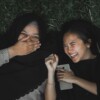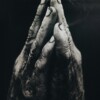Giant kelp. It’s a species of algae that can grow over 50 meters tall, making it the largest marine algae. It’s also one of the fastest growing living things on our planet.1 On its own, giant kelp is an impressive part of God’s creation. However, I’d argue that the true beauty of this species also lies in its interconnectedness. God created a world not of isolation but of webs of relationships among living things. The kelp provides habitat for fish such as the bold orange Garibaldi and food for animals like the Abalone. Humans, too, are connected in the web of interactions—we benefit from the fish raised in the nursery of the kelp forests and then caught recreationally or commercially and from the way that kelp forests buffer shorelines from storms.
So why start with this little ecology lesson? If we are created to be in relationship with God, with others, and with the rest of creation, then this is an aspect of God’s world to embrace in our disciplines and in our teaching. Building attentiveness to the natural world around us and to our fellow humans helps us recognize how we are made to be in relationship and how we can respect and care for the people and world around us.
This interconnectedness is evident in the natural world, and recent work in theological anthropology has also emphasized the development of persons in relationship. Our development of self does not occur prior to relationship with others but rather in and through relationships. Even our potential for being transformed into a greater likeness with Christ is relational; Susan Grove Eastman writes, the “web of relationships in the body of Christ, not isolated or inward-turned individuals, is the arena in which change happens.”2
In the sciences, we often isolate plants, animals, cells, or proteins to observe their properties outside of their normal environment, and certainly this can have great power to address many interesting research questions. But if we do this to the exclusion of knowing and observing things in their web of relationships, we will miss too much of the true nature of what we are studying. Another temptation may be to study the natural world as if humans are external to the system, rather than an embedded part of God’s good creation.
How can our teaching embrace our embeddedness in creation? In my own teaching, I’ve been inspired by The Forest Unseen: A Year’s Watch in Nature by David George Haskell.3 Haskell selected a square meter of forest to visit regularly throughout the year—allowing him to appreciate the changes through the seasons and also focus in on the details that would be missed if simply hiking through rather than taking time to truly settle in and observe. In each chapter he digs deeper into a particular species or natural phenomenon. While my students may not visit a site in nature as regularly as Haskell did, I have had my students take a square-meter grid (a quadrat, in ecologist-speak) out to the forest and just take the time to notice the different components of the ecosystem—both large and small—and think about their relationship to the larger ecosystem of which they form a part. They follow this up with a piece of writing, a sort of mini-chapter modeled after The Forest Unseen, exploring more deeply something they saw in their square-meter of nature and how it fits in a larger web of interactions.
To build a greater appreciation for human persons working in science (rather than disregarding people as supposedly unbiased, outside observers), we can draw on stories of researchers and their experiences of exploring, researching, and sometimes taking missteps or detours along the way. In my classes, I’ve been working to incorporate resources that bring a more human face to scientific research, such as Sean B. Carroll’s The Serengeti Rules.4 This text uses a narrative approach, allowing readers to feel as if they were walking alongside scientists during the work of testing ideas and questioning competing hypotheses about how the world works. For example, we learn how one researcher’s work on coastal tide pools then inspired scientists studying kelp forests to re-think ecosystem regulation. Rather than thinking only of how the growth of the kelp supported other species, researchers Estes and Palmisano documented the importance of predators—in this case sea otters—for the maintenance of healthy kelp forests. If sea otters are removed from the system (as indeed they were by the fur trade), then sea urchins become prevalent and eat so much kelp that the area can become barren. Here we have the interconnections in the ecosystem at play, but also the interconnections among scientists—and a chance for readers to connect with the stories of real people practicing science.
An unbiased observer (if there could be such a thing) might recognize the role of connections in the world, but I believe such an observer would miss the richness of the relational creation in which God has placed us. We are shaped by the world around us, and we shape our world in return. Attentiveness to the web of creation can lead us to a greater appreciation and potentially care for the complex beauty of the creation that sustains and shapes us. Attentiveness to the realities of real humans practicing science—or any discipline—can help us see how we are connected to communities around us and be aware of the relational nature of our disciple. Then, we can more purposefully invest in and benefit from the relational webs around us.
As John Muir wrote, “When we try to pick out anything by itself, we find it hitched to everything else in the Universe.”5 Giant kelp provides an excellent example of how deeper consideration brings to light those threads of connection. For me, this provides a framework to approach not only the particulars of ecosystems but also scholarship and teaching more broadly, as I seek to understand, appreciate, and interpret the complex webs of God’s relational creation.
Footnotes
- “Giant Kelp.” SIMoN. Accessed June 13, 2022. https://sanctuarysimon.org/dbtools/species-database/id/40/macrocystis/pyrifera/giant-kelp.
- Eastman, Susan Grove. Paul and the person: reframing Paul’s anthropology. Wm. B. Eerdmans Publishing, 2017.
- Haskell, David George. The forest unseen: A year’s watch in nature. Penguin, 2013.
- Carroll, Sean B. The Serengeti Rules. Princeton University Press, 2016.
- Muir, John. My first summer in the Sierra. Houghton Mifflin, 1911.























